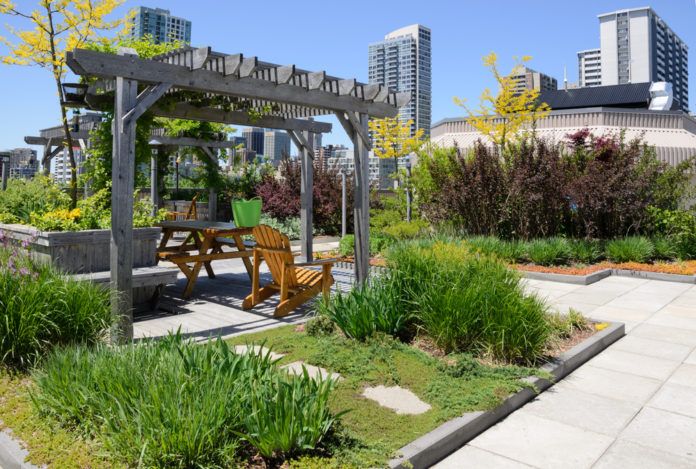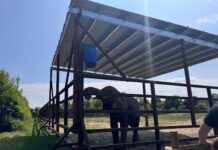
Barry Eagle, managing director at GripClad, discusses some of the common hazards found on green roofs, and the best ways to mitigate the risks they pose.
With green roofs steadily increasing in popularity in urban areas, especially for their sustainability perks, companies need to be even more aware of the safety risks associated with them.
Unlike normal roofing inspections, green roofs require specific attention, care and maintenance, such as regularly removing weeds or replacing dead plants, checking drainage outlets and a careful promotion of the roofing membrane.
This laundry list of caring duties is all to ensure the most luscious and healthy green roof in the months when it can truly thrive. It’s also about public safety and ensuring that green roofs can flourish as an open space to all.
Green roofs are preferred for being low maintenance. But with little-to-no care at all, they run several risks of becoming unmanageable or unsafe, both in the near future and farther away.
Typically hazards result from oversights in your care and maintenance schedules. The information below represents some common hazards found on green roofs and the best ways to mitigate the risks they pose.
Prioritise areas with the highest footfall
A green roof may suffer unevenly from either natural damage or manmade destruction. Depending on who has access to the green space, always prioritise the areas that attract the most footfall. These spots should be regularly assessed for any damage and treated to withstand it. This is one of the most urgent priorities, because public safety could be at-risk, such as a slip, trip or fall.
Areas that should be prioritised, such as those with high footfall, are any spaces where the public is likely to congregate on a green roof. A handful of yearly visitors is unlikely to stress your plant life and natural vegetation. Yet, a key part of accident management is prevention. Where there is any footfall, especially in larger amounts, and a public interest in this green space, then consider hard, safety flooring, such as designated walkways or pathways to guide public usage.
A great safety solution is not merely to signpost about hazards, but to direct and manage the movement of the public on a green roof. Hard-grated walkways, with plenty of signposting, can create a pathway for public guidance, clearly illuminating any accident zones. The application of an anti-slip grating or flooring solution along a clearly defined pathway, encourages public safety at all times.
Weeding or invasive plants
Plants and other vegetation on a sedum roof will likely experience higher volumes of rainfall and this can cause overgrowths of undesirable plant life throughout the year. As a safety tip, undertake periodic evaluations of the roof’s full vegetation – including moss and saplings. This is often more serious than an aesthetic problem because overgrowth can create further tripping hazards.
React promptly to invasive plants, rather than working harder later on to correct harmful overgrowths. Mosses, for example, can bury subtly in grass and spread without treatment. They can also create a slippery surface, similar to unseen ice.
Time the disposal of undesirable plant material, too. Timely removal means that the weed population doesn’t have time to quickly regrow and multiply the kinds of unseen hazards lurking in the grass. Build-ups will not only jeopardise the integrity of the roof, but they’re common slipping and tripping hazards.
Clear drainage
If your green roof can bask from a spring and summer full sun, it’s chances of thriving will naturally improve. Positioning in a property, and its relationship with the sun, improves the kinds of garden variety in these spaces. It also invites a greater urgency for routine care and maintenance.
In addition, leaf litter and other debris is unlikely to blow across it and untidy the pathways, thereby creating further hazards.
Yet, it’s the unseen damage that is most costly to your project. Debris, such as leaf litter, can block key drainage systems, such as gutters, and outright ruin irrigation.
The drainage solution on a green roof is key, as it controls the role of rainwater and other sources of water. Without this, you can expect spills and swells of water build-up that can damage the property.
Create a plan to inspect and document the state and condition of drainage systems as a matter of routine habit, including building gutters. Don’t let build-up occur and react proportionately to any signs of damage here. Build-ups, such as after a storm, can be sudden and they breed future accidents.



